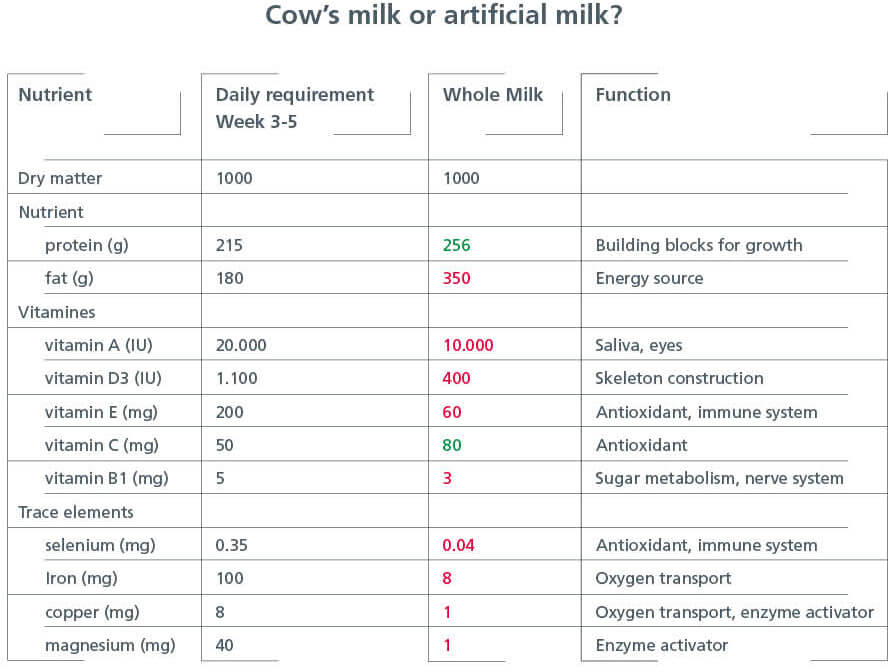Next day delivery
Order before 2:00PM
Free shipping
For orders above €100,-
Safe pay
By iDeal & Klarna
After the colostrum period, milk production continues to weaning. The dairy farmer has the option to feed cow’s milk or a milk replacer. The benefits of supplying mother’s milk include that it contains antibodies and thus promotes the calf’s immunity. The disadvantage is that the milk might not be deliverable, and that the amount of vitamins and minerals is sometimes too low. In particular, iron shortages can occur if cow’s milk is supplied. This means that supplementing the calf with vitamins and minerals is a precondition in some cases. It is not recommended to supply milk from sick cows or penicillin milk. This promotes resistance and can negatively affect young calves.
Milk replacer often contains sufficient vitamins and minerals and the quality is constant. And it is not necessarily more expensive than supplying cow’s milk. Supplying cow’s milk is also possible, but it is then sensible to add a vitamin-mineral supplement to this milk, as cow’s milk does not provide the amount of vitamins and minerals the calf needs.

However, it is very important to prevent feed errors. Examples of this could include failing to make the milk correctly (temperature, mixing, ratio milk/powder). The quality of the water is also important, as milk is mostly made up of water.
